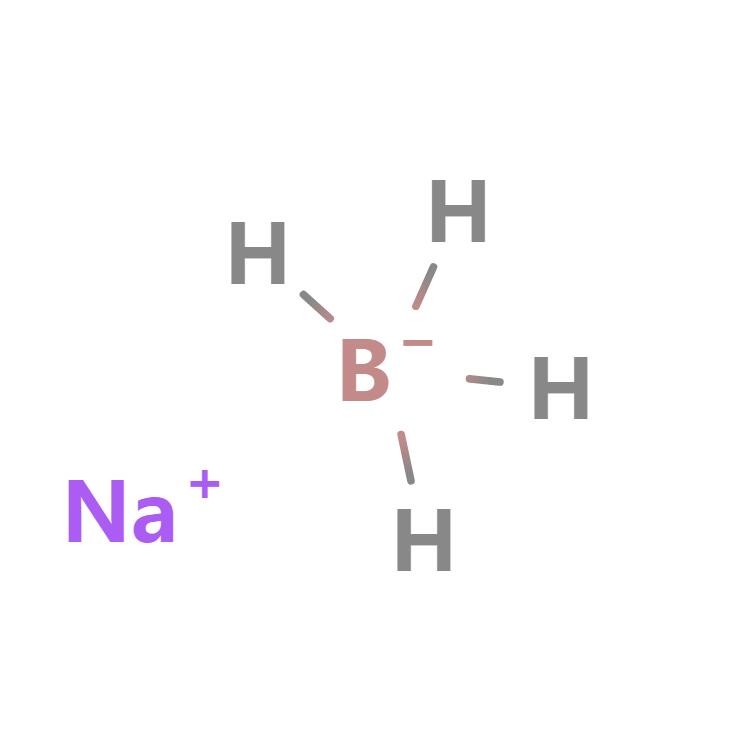CAS 16940-66-2 NaBH4 Sodium Borohydride Product Images

Sodium Borohydride
CAS NO. 16940-66-2
Chemical Name: Sodium Borohydride
Molecular Formula: NaBH4
Boiling Point: 500 °C
Melting Point: 400 °C
Density: 1.07 g/cm³
Chemical Structure Depiction

NaBH4 is a salt, consisting of the tetrahedral [BH4]− anion. The solid is known to exist as three polymorphs: α, β and γ. The stable phase at room temperature and pressure is α-NaBH4, which is cubic and adopts an NaCl-type structure, in the Fm3m space group. At a pressure of 6.3 GPa, the structure changes to the tetragonal β-NaBH4 (space group P421c) and at 8.9 GPa, the orthorhombic γ-NaBH4 (space group Pnma) becomes the most stable.
Description
Sodium borohydride, also known as sodium tetrahydridoborate and sodium tetrahydroborate,[5] is an inorganic compound with the formula NaBH4 (sometimes written as Na[BH4]). It is a white crystalline solid, usually encountered as an aqueous basic solution. It is a reducing agent that finds application in papermaking and dye industries. It is also used as a reagent in organic synthesis.
Properties
The compound is soluble in alcohols, certain ethers, and water, although it slowly hydrolyzes.
Sodium borohydride is an odorless white to gray-white microcrystalline powder that often forms lumps. It can be purified by recrystallization from warm (50 °C) diglyme. It is is soluble in protic solvents such as water and lower alcohols. It also reacts with these protic solvents to produce H2; however, these reactions are fairly slow. Complete decomposition of a methanol solution requires nearly 90 min at 20 °C. It decomposes in neutral or acidic aqueous solutions, but is stable at pH 14.
Oxidation
Oxidation with iodine in tetrahydrofuran gives borane–tetrahydrofuran, which can reduce carboxylic acids to alcohols.[29]
Partial oxidation of borohydride with iodine gives octahydrotriborate:[30]
3 [BH4]− + I2 → [B3H8]− + 2 H2 + 2 I−
Applications
Paper manufacture
The dominant application of sodium borohydride is the production of sodium dithionite from sulfur dioxide: Sodium dithionite is used as a bleaching agent for wood pulp and in the dyeing industry.
It has been tested as pretreatment for pulping of wood, but is too costly to be commercialized.
Chemical synthesis
Sodium borohydride reduces aldehydes and ketones to give the related alcohols. This reaction is used in the production of various antibiotics including chloramphenicol, dihydrostreptomycin, and thiophenicol. Various steroids and vitamin A are prepared using sodium borohydride in at least one step.

